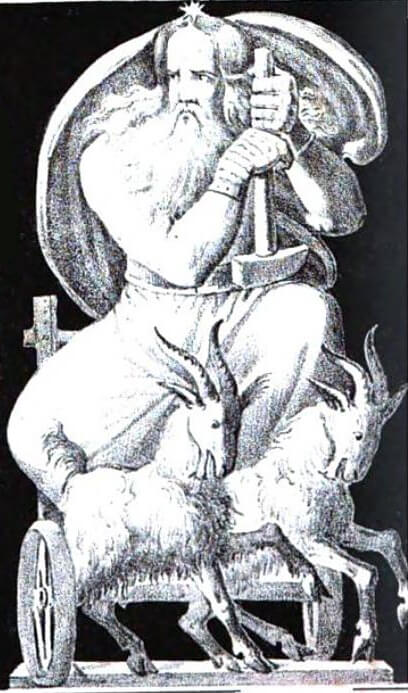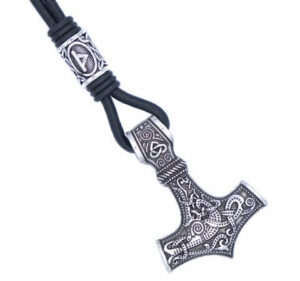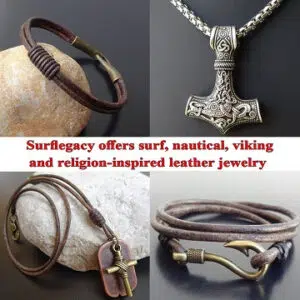Thor’s goats, Tanngrisnir and Tanngnjóstr, were the two unique companions that the Norse god of thunder, Thor, relied on to aid his mighty adventures. These fierce, loud goats pulled Thor’s chariot across the realms and were integral parts of his exploits and stories in Norse mythology.
Thor was famous for defending the Norse realms of gods and humans against monstrous forces. To rapidly travel into battle or respond to threats, he would ride through the skies in a chariot pulled by his two vigorous goats.
Tanngrisnir and Tanngnjóstr enabled Thor’s adventures with their speed, power, and mythic ties to his command of thunder and lightning.
Beyond their importance in legends, they continue to impact pop culture today as iconic symbols of Thor’s Norse origins, let’s see why.
Key Facts on Thor’s Goats
- Tanngrisnir and Tanngnjóstr pulled Thor’s sky chariot in Norse legends
- Old Norse names mean “teeth snarler” and “teeth grinder”
- Represented vitality and courage linked to Thor
- Featured in the Poetic Edda and Prose Edda
- Thor resurrects them in a comedic travel myth
- Marvel adapted them into Thor’s space goats in comics and movies
- Remain iconic parts of Thor’s modern pop culture mythos
The Mysterious Origins and Meaning Behind the Goats’ Names
The actual origins of Thor’s mythological goats Tanngrisnir and Tanngnjóstr are unclear. Unlike Thor’s famous hammer Mjolnir, which was forged by dwarves, there is no definitive story about where the goats came from. They simply seem to have been a part of Thor’s legend as far back as we know.
Mjolnir – Thor’s hammer
But while their exact beginnings may be lost to myth and mystery, the etymology behind the goats’ names provides some valuable insight into their fierce nature and importance in Norse mythology.
Tanngrisnir’s name is a combination of two Old Norse words – “tönn”, meaning tooth, and “grisnir”, meaning snarler or barer. So Tanngrisnir roughly translates to “teeth snarler” or “teeth barer”. This evocative name immediately conjures up the image of a gnashing, ferocious beast baring its teeth aggressively.
Tanngnjóstr has a similar compound name from the Old Norse words “tönn” (tooth) and “gnjóstr” (grinder). So Tanngjóstr can be interpreted to mean “teeth grinder”, again emphasizing the idea of a wild, vicious animal constantly grinding its teeth.
The emphasis on the goat’s teeth in both these names seems very intentional, underscoring their fierce and potentially dangerous temperaments.
The Vikings greatly valued the traits of strength, ferocity, and courage, and the imagery of the goat’s gnashing teeth evokes a sense of these primal qualities. Additionally, the names conjure up a feeling of great power and vitality associated with the mighty god whom the goats served.
So while the origins of Tanngrisnir and Tanngnjóstr may never be fully known, the Old Norse etymology behind their names provides intriguing clues into how the Vikings perceived these mythological creatures – as embodiments of untamed ferocity and power perfectly suited for the god of thunder, Thor.
The names vividly capture the attributes of these legendary goats who were far more than just livestock – they were Thor’s divine companions and living symbols of his own might and strength.
The Goats as Symbols of Thor’s Power and Strength
In Norse mythology, goats had great symbolic meaning and were closely linked to the god Thor. The Vikings saw goats as representations of vitality, bravery, perseverance, and even fertility. As such, Thor’s two goats Tanngrisnir and Tanngnjóstr can be understood not merely as pets or beasts of burden, but as physical embodiments of Thor’s own dominant traits and attributes.
The goats exemplified core Norse ideals of strength, resilience, courage, and power which Thor personified. Thor was one of the most revered Norse gods, the famous son of Odin and a protector of both the gods in Asgard and humans in Midgard. He was renowned for defending Asgard and Midgard from the threats of giants, monsters, and other enemies.
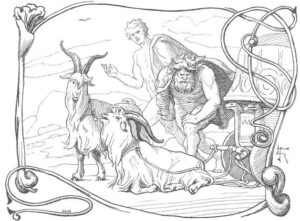
Tanngrisnir and Tanngnjóstr complemented Thor’s role by steadfastly supporting him and enabling his adventures and exploits. The goats would loyally pull Thor’s chariot across the sky, allowing him to rapidly travel between realms and taking him into the heart of battle when needed.
In essence, the goats functioned as extensions and companions of Thor himself. They displayed the same tireless vigor, strength, and bravery as the god whom they served. Their mythical fusion illustrates the deep connection in Norse legends between gods and animals, and how divine powers were closely intertwined with the natural world.
So in Norse cosmology, the goats were more than just livestock – they were living symbols and representations of Thor’s own might, courage, and perseverance. They embodied the Norse ideals that Thor stood for and amplified his role as god of thunder, storms, and war. Their mythical association helped reinforce Thor’s reputation as a mighty god to be both honored and feared.
References to Thor’s Goats in Mythological Texts
Thor’s mythical goats Tanngrisnir and Tanngnjóstr pop up in various Norse myths, epics, and historic texts, giving insights into how they were viewed by the Vikings.
Prose Edda
In Norse mythology, Thor’s two goats who pulled his chariot were named Tanngnjóstr and Tanngrisnir. They appeared in several tales from the 13th century Prose Edda, a seminal collection of Norse myths compiled by Icelandic scholar Snorri Sturluson.
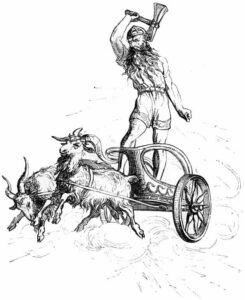
Thor’s goats by alexander 1874
One particular story highlights the goats’ magical connection to Thor. After arriving at a peasant’s home, Thor slaughters the goats and cooks them for dinner. He instructs the peasants not to break any of the bones. However, the peasant’s son breaks open a ham bone, and the next morning when Thor resurrects the goats, one is left lame from its damaged bone. Furious, Thor only calms down when the terrified peasants offer their children as servants.
This comedic tale reveals key details – the goats’ names, their ability to be resurrected by Thor, and the god’s affection for them. The story provided an origin for Thor’s human servants, Thjalfi and Roskva. Other references describe Thor relying on the goats to pull his chariot and traveling without them when in disguise.
The Prose Edda contains the most extensive surviving lore about Tanngnjóstr and Tanngrisnir. Though playing supporting roles, these mythic goats were clearly established as Thor’s famed companions and mounts in Norse legend by the 13th century. Modern retellings continue to explore their mythical attributes as godly livestock.
The Poetic Edda
In the Old Norse Poetic Edda, a 13th century collection of Norse mythological poetry, Thor’s two goats feature prominently as the god’s mythological chariot-pulling steeds, enabling his exploits.
While not directly named in the poems, these divine goats are clearly the same loyal companions of Thor that appear in the later Prose Edda written by Snorri Sturluson.
In the poem Hymiskviða, before Thor and Tyr set out on their journey to the hall of the giant Hymir, Thor first secures his goats, described as having splendid horns, with a human named Egil in Midgard.
Later in the same account after Thor slays Hymir and his many-headed army, the goats are said to collapse “half-dead” due to their exhaustion and lameness from the intense battle. The poem states that the goats’ condition is somehow the fault of Loki, yet the narrator says this part of the tale has already been told previously, and that someone wiser could recount the story of how Thor was later repaid by a lava-dweller with his children.
In another poem called Þrymskviða, a vivid stanza describes how Thor rides his goat-driven chariot rapidly through the heavens on his way to the realm of the giants in Jötunheimr. The verse dramatically tells how the goats rushed home to their traces and had to run swiftly and furiously to pull the thunder god’s chariot. Their passage caused the very mountains to burst and the earth to become scorched by flames. These striking lines paint a scene of chaos and destruction as Thor hurtles to giant territory in his goat-pulled chariot.
While the goats play supporting roles in these Poetic Edda poems, their appearances affirm that they served as Thor’s mythological means of conveyance and aided him in his famous adventures and battles against giants and other enemies. The poems provide early documentation that complements the more extensive information about Thor’s divine mythic goats found in the later Prose Edda of Snorri Sturluson.
Other Historic References
Outside of the main texts, scattered references to Thor’s goats appear in old Scandinavian and Germanic works. In the 12th century Norwegian poem Thorsdrapa, a poet refers to the goats by name as part of a verse praising Thor. This helps verify that Tanngrisnir and Tanngnjóstr were part of widespread oral tradition.
These references across sources give insight into how Thor’s iconic goats were an established part of Norse mythology and an attribute of the storied god of thunder.
The Goats’ Magical Connection to Thor
One of the most intriguing attributes of Tanngrisnir and Tanngnjóstr was their magical ability to be resurrected by Thor after being slaughtered.
According to the legend, when Thor and Loki stayed the night at a poor farmer’s home, Thor killed his goats so they could be cooked and eaten. Afterward, Thor told everyone not to break any of the goats’ bones. But the farmer’s son, Thjalfi, broke a leg bone to suck out the marrow inside.
The next morning, Thor revived the goats by waving his hammer Mjolnir over their remains. But one goat limped due to its broken leg bone. Upon realizing what had happened, Thor was furious but ultimately released his anger after the frightened farmer offered his son and daughter as servants to appease Thor.
This story highlights the goats’ mythical nature and connection to Thor. Only he had the power to bring them back to life when needed.
Symbolic Rebirth and Renewal with Thor’s Goats
The cyclical story of Thor slaughtering his goats for food but then resurrecting them carries strong symbolic meaning in Norse mythology. The Norse viewed death and rebirth as a continual, repeating cycle rather than a final end.
The magical ability of Tanngrisnir and Tanngnjóstr to be repeatedly revived represents the theme of cyclical renewal – the idea that life ends but then begins again anew in an endless pattern. This cycle was an important part of Norse beliefs about the fundamentally cyclical nature of existence.
According to myth, Thor could kill his goats for sustenance but then renew them to life again with his divine powers. This ability reflects principles of regeneration central to Norse cosmology.
In this way, Thor’s mythological goats embody the Norse ethos of rebirth and renewal after death. Their mythical relationship with Thor reinforced his role as a god representing ideas of fertility, abundance, and the restorative powers of nature.
The goats mirrored patterns seen in the changing seasons – periods of decay and death, followed by reemergence and reawakening. Their resurrection evoked the cycle of planting and harvest central to agrarian societies like the Vikings.
So in Norse mythology, the goats symbolized the inevitable revival of life even after death or destruction. Their bond with Thor echoed themes of cycles, fertility, and the god’s ability to periodically renew all things. This mythology provided an explanation for the natural world’s constant cycles of death and rejuvenation.
Thor’s Goats in Popular Culture
As with many elements of Norse mythology, Thor’s famed goats Tanngrisnir and Tanngnjóstr have endured as part of modern popular culture. They continue to appear in various retellings and adaptations across different media.
Neil Gaiman’s Norse Mythology
In his 2017 book Norse Mythology, author Neil Gaiman brought the classic Norse tales back to life in modern prose. His lively and engaging narration of the scene where Thor slaughters and eats the goats highlights their magical resurrection ability the next day. Gaiman’s account makes the myth accessible to new generations of readers.
Marvel Comics and Movies
The legendary goats have made appearances in Marvel’s comics and movies about the superhero Thor over the decades. In the comics, they have been referenced or depicted as Thor’s loyal companions from Norse myth. Most recently, in the 2022 film Thor: Love and Thunder, Thor acquires a pair of alien cosmic goats who pull his chariot in comedic fashion. Their inclusion is a nod to the myths.
Video Games
Thor’s goats have also been visualized as characters in several video games drawing on Norse lore. In the God of War franchise they are shown as ominous, beastly creatures, symbolizing Thor’s might. In the online battle game Smite, the goats are incorporated as part of Thor’s animations and abilities, evoking their mythic attributes.
Presence Across Pop Culture
Beyond direct portrayals, the goats have become icons representing Thor’s Norse origins in pop culture. Their names are used for characters in comics, novels, and shows about Norse mythology. As Thor’s popularity grows, so does recognition of his famed goats as his mythological trademarks.
The continued vibrant presence of the goats across such adaptations and references is a testament to their enduring legend and appeal as symbols of Thor’s power. More than just livestock, they capture the imagination as mythical beasts intertwined with Thor’s adventures and Norse cosmology.
Frequently Asked Questions about Thor’s Goats
What did the goats eat in the myths?
There are no definitive mentions of the goats’ diet in the Eddas or sagas. As livestock, they likely grazed on grass, leaves, and grains when not pulling Thor’s chariot. Their mythical aspect suggests they may have also fed on otherworldly materials.
Did the goats have any special powers besides resurrection?
The myths contain no references to additional abilities beyond their resurrection by Thor. As godly creatures, they likely had enhanced strength, speed, and endurance compared to regular goats.
Were there any other mythological goats in Norse legend?
Yes, Norse mythology also featured the goat Heiðrún, who endlessly supplied mead for the gods in Valhalla by eating leaves from the world tree Yggdrasil. A pair of wise goats also drew the chariot of the goddess Freyja.
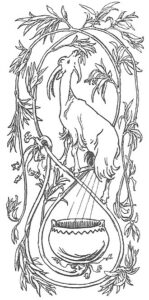
Goat Heidrun by Lorenz Frølich
Why are the goats described as “screaming” in Marvel?
This reflects their noisy, unruly nature hinted at in the original Norse names meaning “teeth grinder” and “teeth snarler.” It also adds humor and emphasizes their otherworldly characteristics.
Do the goats appear in other pop culture beyond Marvel?
Yes, they are also referenced in media such as the God of War video games and Neil Gaiman’s book Norse Mythology. As symbols of Thor, they continue being reimagined in modern fiction.
So while many details are lacking, the essence of Thor’s mythic goats endures as fierce livestock serving the famed Norse god of thunder and lightning!
Conclusion
As Thor’s constant companions, Tanngrisnir and Tanngnjóstr were far more than just everyday animals. These mythical goats possessed unique powers and attributes that made them living symbols of Thor’s strength and potency.
With their ability to resurrect and their mythical ties to Thor’s command of thunder and lightning, the goats embodied key Norse ideals about regeneration, vitality, and the bonds between gods and beasts. So next time you hear the thunder roar, just think of Thor racing across the sky on his goat-driven chariot!
Shop Norse Jewelry
Are passionate about Norse Mythology?
Finding the ideal piece of Norse Jewelry can be challenging and time-consuming, especially if you lack inspiration or don’t know where to look.
Surflegacy, has you covered. We have a wide range of Handmade Jewelry in various styles, shapes, colors, and materials, to accentuate your Norse spirit and look. Do not hesitate to visit our selection HERE
Whatever you wear, you’ll find the ideal trendy piece to complement your wardrobe. Our jewelry is designed to be worn every day, no matter where you go or what season is. Are you ready to step up your wardrobe game?

